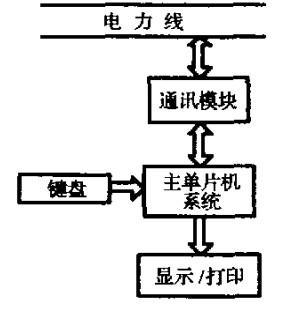Public street lamps are an important part of public utilities construction. The traditional street lamp general control room can only turn on and off the street lamps every day, and can not understand the status of online street lamps in real time, such as voltage, current and the quality of street lamps, which leads to slow maintenance of street lamps and inconvenience to citizens. With the improvement of people's living standards, the monitoring of public street lamps is becoming more and more important. In order to improve the quality of public lighting system and find the damage of street lamps in time, people hope to find a way to use the existing street lamp power supply system to transmit the signal of controlling street lamps through power line carrier communication technology. The utility model relates to a remote control system for the timely maintenance of public street lamps.
For street lamp remote measurement and control and landscape lamp remote control, we have ready-made cases and technologies (including software and hardware), which can be used by customers, or can be developed and customized according to customer requirements. Welcome to inquire: 010-82899827 13466665507
1、 Structure principle and working process of the system
The public street lamp remote monitoring system is composed of a host module and several slave modules. The host and slave are connected through power line, remote data acquisition terminal and remote data acquisition. The host module is composed of main single chip microcomputer system, micro printer, display module, keyboard, communication module and other peripheral equipment, as shown in Figure 1. The host is installed in the main control room of the street lamp.

Figure l composition block diagram of host system
As shown in Figure 2, the slave module is composed of peripheral devices such as slave MCU system, current sensor, voltage sensor, photoelectric converter, address coding matrix, relay switch and communication module. The slave is installed in each street lamp control box, and the host and slave realize data exchange by power line carrier communication.

Fig. 2 composition block diagram of slave system
According to the requirements of the operator, the master single chip microcomputer system can send the slave address and the command to turn on or turn off the relay to the slave through the communication module to turn on the street lamp. After the operator has turned on all the street lights, the patrol command is sent to the slave through the communication module again according to the size of the slave address, and the slave will return the detected relevant information of the street light to the host and print it out. According to the printed report, we can know the operation of each slave, and then understand the quality of online street lamps, so as to realize the remote monitoring of street lamps.
2、 Hardware structure of the system
2.1 host system
The host system is the application mode of 8031 single chip microcomputer, which is composed of micro printer, 4-and-a-half display unit and keyboard unit. Because the host processes a large amount of data, it is necessary to expand the storage system of the host. The keyboard unit is directly realized by the port line of single chip microcomputer. The system defines the following function keys:
KL: start all street lights, print and display the collected data of each slave;
Ratio: turn off all street lights;
K3: automatically inspect all street lamps, print and display the collected data of each slave.
2.2 slave system
Fig. 3 is a hardware structure block diagram of the slave system. Current sensor, voltage sensor and self-made photoelectric conversion unit convert the collected signals into voltage value, current value and photoelectric conversion data after adjustment and filtering, and then input them to a / D conversion unit, and finally transmit them to A1 to C51 single chip microcomputer system. The voltage sensor is connected in parallel to the wiring terminal of the street lamp, the current sensor is connected in series in the circuit of the street lamp, and the A / D conversion chip adopts 1 ℃ l1543 chip.

Fig. 3 hardware structure block diagram of slave system
The slave address coding unit is set by a group of switches and uses the lo port line of the single chip microcomputer, so the slave address has 1024 codes. If the number of street lamps is large and the slave address is not enough, it can be expanded through 8255 interface chip. The single chip microcomputer turns on and off the street lamps through the driving unit (including optocoupler solid-state relay).
The communication module consists of SSCP300 and sscp111 power line carrier chips. SSCP300 and sscp11l are carrier chips of Intel. The working principle and application of the chip also need Juying electronic rtu6640 to collect data. The communication module exchanges information with the master-slave MCU through the interruption process of the MCU.
3、 Software structure of the system
3.1 data format of communication between master and slave
The data format of the communication between the host and the slave is the same as the packet data packet on WWW. the data packet sent by the host to the slave contains the start bit, host address, slave address, demand command, parity bit and end bit. The data packet sent by the slave to the host contains the start bit, host address, slave address, sampled voltage value and current value, parity bit and end bit. The information of the master can be sent to any slave, but the information of the slave can only be sent to the master, and each slave does not communicate with each other. Because the system has no high requirements for real-time performance, and in order to prevent the impact of turning on or off the street lights together on the line current, the information sent by the host to the slave adopts the method of gradually increasing the address, that is, the data packet sent each time contains only one address of the slave. The data sent and received by the host and the slave are interrupted. When all the slave machines receive the information from the host machine, immediately unpack the data packet and compare it with the local address. If it is the same as the local address, send the sampled data to the host machine in packaging format; If it is different from the local address, no data will be sent to the host.
3.2 software design of master and slave
The host software mainly includes communication program (including data packaging), real-time display and printing program. The host stores all slave addresses in the host memory in the form of a table, and then sends the data packet to the slave according to the format of the host communication data packet according to the needs of the operator. After receiving the data packet from the slave, the host unpacks the data and prints the slave address, voltage value and current value of the corresponding slave. If the current value of the slave is close to zero, it indicates that the street lamp corresponding to the slave is broken. If the data packet of the slave is not received, only the address of the slave is printed, indicating that there is a problem with the street lamp, such as the slave is not working.
The main function of the slave is to turn on and off the street lights or patrol the voltage and current values of the sampled street lights according to the requirements of the host, and package the sampled data and send it back to the host.
4、 Conclusion
The remote monitoring system of street lamps based on power line carrier technology has been tested. It is found that the system can reliably and effectively monitor public street lamps, avoid heavy wiring work, and has the advantages of low cost, firm and reliable transmission line and convenient installation and use.

 Manager Wang
Manager Wang
 OfficialAccounts
OfficialAccounts